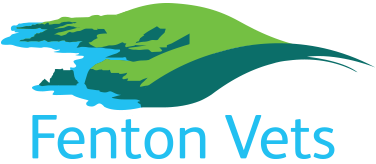Farm Animal Factsheets
Fenton Vets is part of the XLVets group, a group of independently owned, progressive veterinary Practices. Our aim is to provide the highest standard of veterinary care, something which is improved by our ability to work together with a number of equally high standard Practices from across the UK.
XLVets provides their membership practices with access to innovative developments in services, as well as a multitude of accessible information. Below are a list of downloadable factsheets, listed in alphabetical order. Click the title to open in PDF form.
Factsheet Downloads
Coccidia are single celled protozoal organisms of the genus Eimeria. They have a complex life cycle involving both asexual and sexual reproduction.
Bovine Digital Dermatitis (BDD) »
Bovine Digital Dermatitis (BDD) is a common cause of infectious lameness worldwide.
It takes four to six months for the eggs in a cow’s ovaries to grow to their ovulatory state. Management of the cow during this period is critical in determining their ability to yield transferable embryos that become established pregnancies.
Before pasteurisation of milk (1935) and compulsory testing (1950) bovine TB (bTB) was a recognised cause of death in humans.
Bull Breeding Soundness Examination »
Managing reproduction effectively to achieve optimum fertility is essential to the running of a profitable cattle enterprise.
This factsheet provides details about the BVD Virus.
Respiratory disease in calves is an interaction between the environment, the immunity of the calf and the various infectious agents involved.
This factsheet provides details about the Calf Scour.
Campylobacter foetus venerealis is one of the many potential causes of bovine infertility and abortions. It is transmitted from cow to bull to cow at serving.
Colostrum is the fuel of life and making sure your calves get enough is the cornerstone to all successful calf rearing enterprises.
This factsheet looks at Dairy Cow Lameness.
This factsheet provides details about Dairy Herd Biosecurity.
This factsheet provides details about Environmental Mastitis.
Examination of the breeding ram »
Your ram is half the solution to getting a high percentage of ewes in lamb quickly to give a tight lambing period and help get lambs away early.
Infectious Bovine Rhinotracheitis – IBR »
IBR is the most obvious clinical disease associated with infection by Bovine Herpesvirus 1 (BoHV-1).
Infertility Problems in Dairy Herds »
This factsheet provides details about infertility problems in dairy herds.
This factsheet provides details about Johne’s Disease.
This factsheet provides details about liver fluke in cattle.
Managing the Periparturient Cow »
The time immediately around calving (periparturient period) is the most critical part of a cow’s year for many health and production reasons.
Perhaps the most common and significant neurological disorder, metabolic disease tends to affect adult sheep, particularly around lambing time.
This factsheet provides details about Milk Fever.
Minimising Calving Difficulties »
This factsheet provides details about how you can minimise calving difficulties.
Abortion in sheep is common, but it should not be thought of as inevitable. There are excellent vaccines for the commonest causes of abortion and some of the other causes have factors that can be reduced.
Parasitic Bronchitis in Cattle »
Lungworm, Husk, Hoose, Parasitic Bronchitis: there are many names for the disease caused by the nematode worm Dictyocaulus viviparous.
Schmallenberg virus was first detected in August 2011 within Germany, spreading to the Netherlands, Belgium and the UK.
For many UK flocks, lameness is an endemic problem and prevalence has probably increased following the change in weather patterns to mild winters and wet summers.
British summer weather may be unpredictable but summer mastitis certainly isn’t.
This factsheet provides details about teat health.
This factsheet provides details about the Oestrus cycle.
